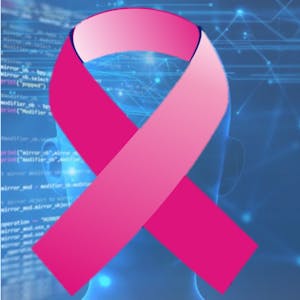Artificial Intelligence for Breast Cancer Detection
About this Course
The objective of this course is to provide students the knowledge of artificial intelligence processing approaches to breast cancer detection. Students will take quizzes and participate in discussion sessions to reinforce critical concepts conveyed in the modules. Reading assignments, including journal papers to understand the topics in the modules, will be provided. The course is designed for students who are interested in the career of product development using artificial intelligence and would like to know how AI can be applied to mammography. The course content is focused on the AI processing paradigm along with the domain knowledge of breast imaging. This course approach is unique, providing students a broad perspective of AI, rather than homing in on a particular implementation method. Students who complete this course will not only leverage the knowledge into an entry level job in the field of artificial intelligence but also perform well on projects because their thorough understanding of the AI processing paradigm.Created by: Johns Hopkins University

Related Online Courses
To realize next-generation devices, novel ceramic materials with ultimate physical and chemical properties are required. For this purpose, a few intrinsic and extrinsic approaches for the... more
This is a self-paced lab that takes place in the Google Cloud console. In this hands-on lab, you turn your code into a replicated application running on Kubernetes. You create a Node.js app, create... more
Unlock the full potential of Azure DevOps and Git to master modern software delivery practices. This course equips you with the skills to manage projects, streamline development, and implement... more
This course provides an in-depth journey through modern Java object-oriented and function programming concepts and features, and explores how to apply these concepts and features to implement... more
In this Specialization, you will learn to analyze and visualize data in R and create reproducible data analysis reports, demonstrate a conceptual understanding of the unified nature of statistical... more








